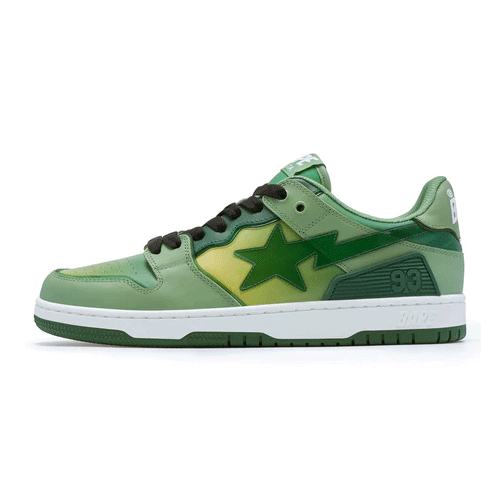Notifications
ALL BUSINESS
COMIDA
DIRECTORIES
ENTERTAINMENT
FINER THINGS
HEALTH
MARKETPLACE
MEMBER's ONLY
MONEY MATTER$
MOTIVATIONAL
NEWS & WEATHER
TECHNOLOGIA
TV NETWORKS
VIDEOS
VOTE USA 2026/2028
INVESTOR RELATIONS
COMING 2026 / 2027
ALL BUSINESS
COMIDA
DIRECTORIES
ENTERTAINMENT
FINER THINGS
HEALTH
MARKETPLACE
MEMBER's ONLY
MONEY MATTER$
MOTIVATIONAL
NEWS & WEATHER
TECHNOLOGIA
TV NETWORKS
VIDEOS
VOTE USA 2026/2028
INVESTOR RELATIONS
COMING 2026 / 2027
About Me
 scott jhonson
scott jhonson The Latest 2024 Collection is Spider hoodie, Spider T Shirt, Sweatpants, and Tracksuit Shipping All Around the World 100 Guaranteed Products
 scott jhonson -
10 hours ago -
Business -
bapesta
bapesta shoes
bapex
-
15 views -
0 Comments -
0 Likes -
0 Reviews
scott jhonson -
10 hours ago -
Business -
bapesta
bapesta shoes
bapex
-
15 views -
0 Comments -
0 Likes -
0 Reviews

If you're tapped into the streetwear or sneaker scene, chances are you've heard of the Bapesta. Flashy, bold, and unapologetically loud, Bapestas have made waves far beyond Japan, infiltrating hip-hop videos, celebrity closets, and sneakerhead wish lists since the early 2000s. But what makes this sneaker so special? Why does it still command attention in a world flooded with collaborations and limited-edition releases?
In this article, we'll explore the history of Bapesta, its design influence, cultural significance, and why it continues to be a beloved silhouette in modern fashion.
Bapesta is a sneaker model produced by A Bathing Ape (BAPE), a Japanese streetwear brand founded by Nigo in 1993. Officially known as the BAPE STA, the shoe made its debut in the early 2000s and was immediately recognized for its striking resemblance to Nike's Air Force 1. However, Bapesta set itself apart with bold colorways, patent leather uppers, and the brand’s signature shooting star logo replacing Nike’s swoosh.
The name itself — a hybrid of “BAPE” and “STA” (short for “star”) — fits right into the brand’s playful, manga-influenced aesthetic. While the similarities to Nike stirred controversy, they also helped the sneaker gain cult status in a very short time.
When Nigo introduced Bapesta, he wasn’t trying to copy Nike — he was making a cultural statement. At the time, Japan’s youth culture was being reshaped by hip-hop, graffiti, and Western fashion. BAPE, already a coveted brand in Tokyo, seized the opportunity to merge American sneaker culture with Japanese streetwear.
The Bapesta became a favorite among hip-hop artists like Pharrell Williams, Kanye West, and Lil Wayne, helping it break out internationally. Pharrell, in particular, had a close relationship with Nigo and often wore Bapestas in his early music videos and red carpet appearances. This association cemented the shoe’s position as more than just a sneaker — it was a lifestyle symbol.
One cannot talk about Bapesta without acknowledging the elephant in the room: its undeniable resemblance to the Nike Air Force 1. From shape to sole, it mirrors the AF1 silhouette almost identically — a move that has sparked debate for years.
Yet, Bapesta brings its own flavor. Unlike the monochrome palette often seen in Air Forces, Bapestas burst with color, wild prints, and patent leather shine. Limited-edition designs, celebrity collaborations, and quirky graphics have become hallmarks of the sneaker. While Nike maintains a cleaner, athletic feel, Bapesta thrives on eccentricity and fashion-forward flair.
From a legal standpoint, BAPE has faced scrutiny over the years. In fact, Nike filed a trademark infringement lawsuit against BAPE in 2023, asserting that the similarities were too close for comfort. However, legal issues aside, Bapesta has forged a unique identity in sneaker culture.
The early 2000s were the golden era for Bapesta. While Japanese streetwear was beginning to gain traction worldwide, Bapesta became a bridge between East and West. American rappers were rocking Bapestas on stage, while Japanese teens queued for hours outside BAPE stores in Harajuku. It was one of the first non-American sneakers to gain genuine global influence.
This crossover appeal helped shape a generation of streetwear lovers who valued authenticity, boldness, and exclusivity. Bapesta wasn’t just a sneaker; it was a statement — loud, proud, and boundary-pushing.
Even today, modern fashion designers and sneaker brands borrow from the same playbook: shock value, storytelling, and celebrity endorsement. In many ways, Bapesta helped write that rulebook.
A big part of Bapesta’s appeal lies in its limited-edition releases and high-profile collaborations. Over the years, BAPE has teamed up with an impressive roster of names, including:
Kanye West (College Dropout Bapestas)
Pharrell Williams (BBC Ice Cream versions)
Marvel Comics (superhero-themed colorways)
SpongeBob SquarePants (yes, really)
Undefeated and Stüssy (streetwear brand crossovers)
These collaborations have become collector’s items, often reselling for thousands of dollars. Their rarity and unique designs add to the hype, ensuring that Bapesta remains relevant in a market obsessed with limited drops.
Internal linking suggestion: For a site that covers sneakers, link to related articles like "Top 10 Rarest Sneaker Collaborations of All Time" or “Kanye’s Most Iconic Fashion Moments.”
Though its peak might have been in the early 2000s, Bapesta never truly disappeared. In recent years, BAPE has re-released classic colorways and launched new designs that appeal to today’s younger sneakerheads.
Part of its resurgence can be attributed to the Y2K fashion revival, where styles from the late '90s and early 2000s are enjoying a nostalgic comeback. Chunky silhouettes, shiny materials, and maximalist designs are once again in demand — and Bapesta fits right in.
Moreover, new collaborations and partnerships continue to fuel interest. In 2020, BAPE introduced the SK8 STA, a silhouette inspired more by skate culture but rooted in the Bapesta legacy. Meanwhile, capsule collections and NFT integrations show that BAPE is looking ahead while honoring its roots.
Wondering how to wear Bapestas today without looking like you’re stuck in 2003? It's all about balance. Let the shoe be the centerpiece and pair it with toned-down fits. Think slim cargo pants, oversized hoodies, and minimal accessories. Bapestas work well with both neutral and colorful streetwear outfits, depending on the model.
If you're lucky enough to own a limited-edition pair, consider displaying them alongside your collection — they’re as much art as they are footwear.
Authentic Bapestas can be found at official BAPE stores, on their website, and through select high-end retailers. However, due to high demand and limited releases, many enthusiasts turn to resell platforms like StockX, GOAT, or Grailed.
Be cautious of counterfeits, especially with older releases. Look for clear branding, stitching quality, and authentic packaging. A good internal link opportunity here would be a guide on "How to Spot Fake Bapestas."
In the fast-moving world of sneakers, where hype fades quickly and trends change overnight, Bapesta has stood the test of time. More than just a sneaker, it's a symbol of innovation, rebellion, and cross-cultural expression.
Whether you love it for its design, history, or sheer audacity, Bapesta has earned its place in the streetwear hall of fame. And in a fashion landscape where nostalgia reigns supreme, the return of Bapesta feels both timely and iconic.
